
7 Raphael Paintings You Should Know
500 years after his death, Raffaello Sanzio, better known as Raphael, remains an icon of the High Renaissance. An artist of the divine, he was the official painter of the Vatican and dedicated his life to art. Whether you are a fan of Naive art or prefer Rococo, Raphael’s paintings are of great consequence. But which are the ones to know and what is Raphael’s most famous painting? Here you will discover 7 must-see works of art by Raphael.
1. The Three Graces, one of the most famous Raphael’s paintings
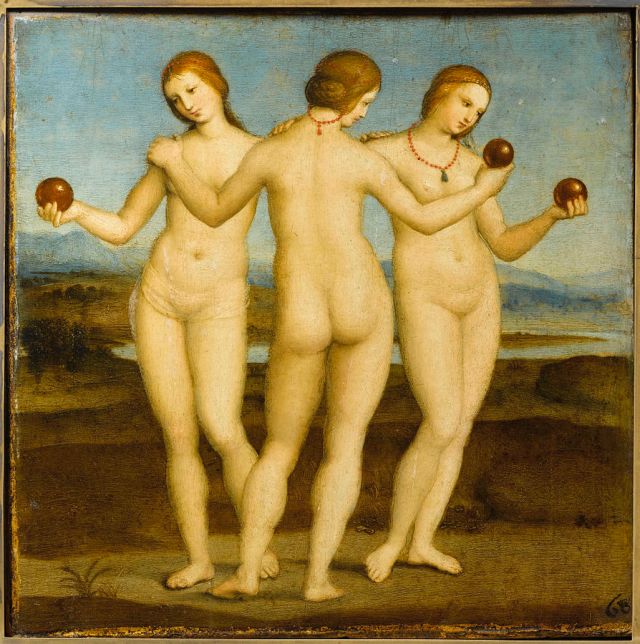
This famous painting, The Three Graces, is certainly one of Raphael’s most iconic paintings. It is no less enigmatic as it is the subject of debate. Some claim that the painting originally represented the judgment of Paris, from Greek Mythology. Raphael would transform the models into ancient Greek nymphs, the Hesperides, capable of offering immortality through apples. Others believe that this painting represents Aglaia, Thalia and Euphrosyne, three daughters of Zeus who symbolize joy, splendor and abundance. In any case, this work expresses a delectable sweetness of the female nude.
2. The School of Athens, a tribute to philosophy
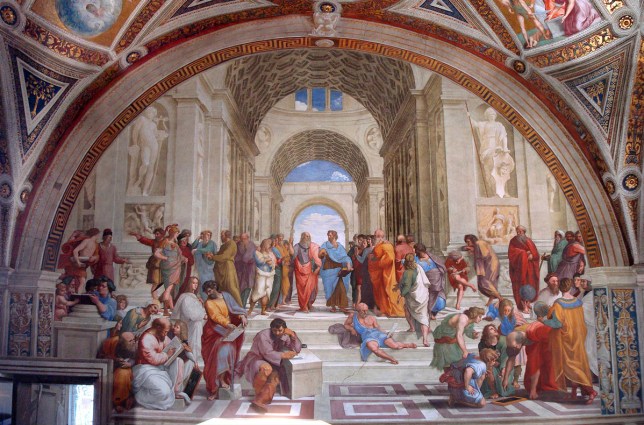
Commissioned directly by Pope Julius II, this very large fresco of 5m x 7m70 represents no less than 58 characters. And not just any characters! Included are: Diogenes, Plato, Aristotle, Pythagoras and Heraclitus who rub shoulders with Michelangelo and Raphael himself! This is an historical and geographical anachronism whose symbolic power is undeniable. Here, Raphael depicts the search for truth and pays tribute to philosophy in all its splendor. Among Raphael’s paintings in the Vatican, this stands out as a favorite, since it has recently become the official painting of the papacy.
3. Self-portrait, a double painting by Raphael
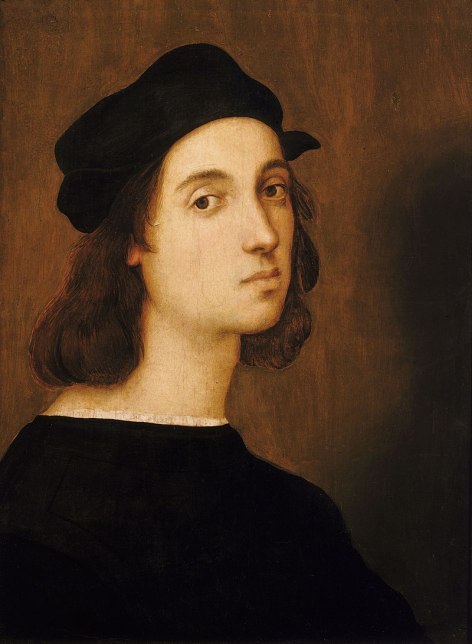
In this self-portrait, Raphael seems to reveal his ambivalent character. His eyes looking up at the viewer give him an impish look, but his gaze is deeply gentle. Both model and painter, his bust seems to be viewed from behind and his face from the front. He has a youthful complexion, but a serious demeanor. Almost austere, the cameo of brown highlights the natural whiteness of his skin. Much less colorful than biblical representations, the sobriety of this painting translates a great humility. A self-portrait that will become iconographic, since it will later be commemorated on the 500,000 Italian lira banknotes.
4. The Triumph of Galatea, or mythological beauty

A mythological painting that is openly inspired by classical and religious norms, this painting is also emblematic. From Greek Mythology, it represents Galatea, the daughter of Doris and Nereus, and one of the fifty sea nymphs, also known as Nereids. Free and powerful, this character expresses a beauty ideal specific to this period.
5. La Fornarina, the most scandalous Raphael’s painting
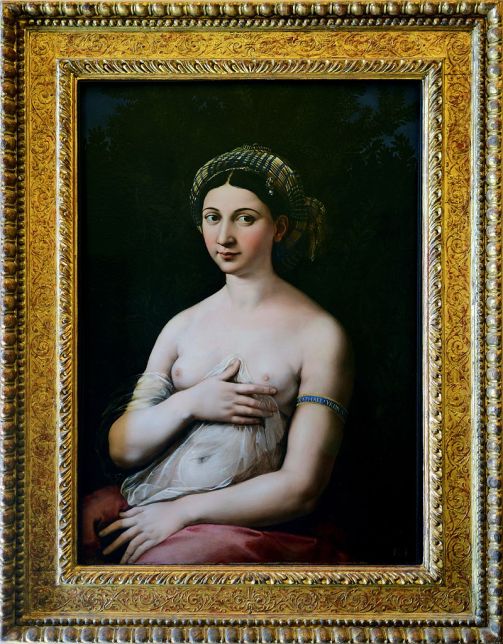
This painting by Raphael is one of the most controversial since it represents a woman in the splendor of nudity. With this painting La Fornarina, which means the baker, Raphael claims the identity of the model: Margarita Luti, his great love. Produced shortly before his death, this work caused a scandal for its erotic character. It then became a symbol of love and passion and was admired by many of the greatest painters.
6. The Sistine Madonna, a work of perfection

Another representation of the Virgin, the Sistine Madonna overhangs this painting with strength and naturalness. With its unparalleled technical perfection, this painting attests to Raphael’s genius.
7. The Transfiguration, one of the last of Raphael’s paintings
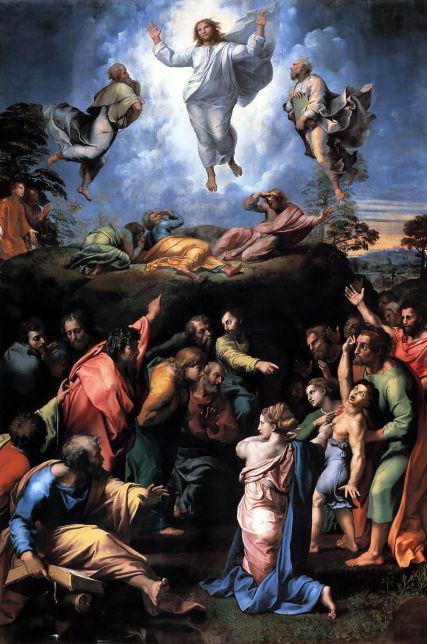
A true religious ode, The Transfiguration depicts a biblical episode. The upper part of the painting represents the metamorphosis of Christ’s human appearance, revealing his divine character. On the lower part, we observe the liberation of a child possessed by the devil, performed by Christ himself.
Raphael’s paintings, between heaven and earth
Despite his short life, Raphael left a monumental mark in art history. Paintings, drawings, frescoes and architectural monuments, he was as prolific as he was a perfectionist. Painting the sublime and the sacred, he too became a divine figure. To this day, some consider him to be a sort of “mortal god”. Which of Raphael’s works touches you the most?

About Artsper
Founded in 2013, Artsper is an online marketplace for contemporary art. Partnering with 1,800 professional art galleries around the world, it makes discovering and acquiring art accessible to all.
Learn more













